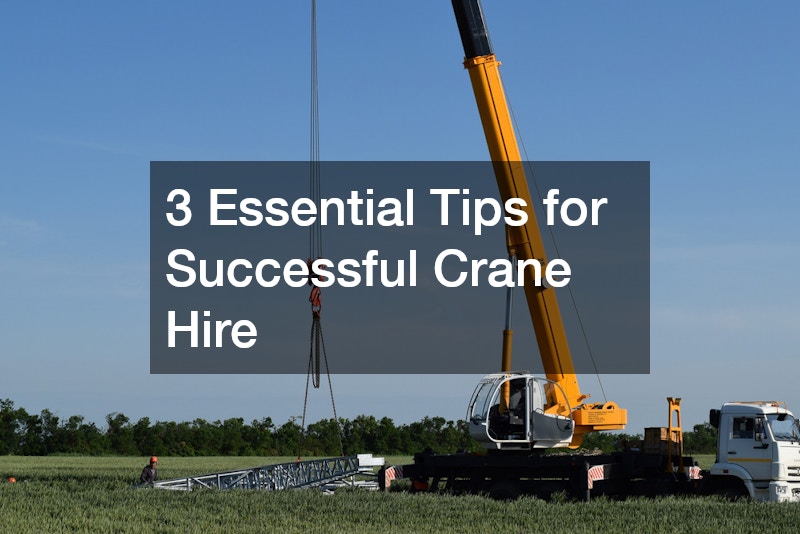Hiring a crane is a crucial step in many construction and heavy lifting projects. Whether you’re managing a large-scale building site or coordinating a smaller residential task, selecting the right crane and hiring process can significantly impact efficiency, safety and cost. While the process may seem straightforward, there are important considerations that can influence the success of your project. In this article, we’ll explore three essential tips that ensure your crane hire experience runs smoothly from start to finish.
1. Assess Your Project Requirements Thoroughly
Before contacting any provider, it’s vital to understand your specific project needs. The type of crane required can vary widely based on the nature of the job.
Begin by evaluating the weight and dimensions of the loads to be lifted, the height and distance those loads must travel and the accessibility of the site. These factors will help determine the most appropriate crane type, whether it’s a mobile crane, tower crane or a specialised model like a crawler or rough terrain crane.
It’s also important to assess the ground conditions. Uneven terrain, underground utilities or soft soil can complicate crane setup and pose safety risks. Addressing these elements early allows the hiring company to recommend the right stabilising equipment or even suggest alternative lifting solutions if necessary.
Moreover, consider the timeline of your project. Different cranes require different setup times, and availability can vary depending on the provider and location. Being clear about your schedule helps ensure that the crane is delivered, assembled and operational when you need it, minimising downtime.
2. Choose a Reputable and Compliant Provider
Once your project requirements are clearly defined, the next step is selecting a crane hire provider that meets safety and regulatory standards. Not all providers offer the same level of service, and choosing a reputable company can make a significant difference in the success of your lift.
Start by verifying that the company holds current licenses and certifications. In Australia, crane operators must meet national competency standards and hold the appropriate High Risk Work Licence. Additionally, the company should maintain up-to-date servicing and inspection records for their equipment, which should be readily available for review upon request.
Insurance coverage is another critical aspect. Ensure the provider carries adequate insurance for both their equipment and personnel. This protects you from liability in the event of damage, accidents or equipment failure on site.
Finally, look for a provider with a strong safety culture and proven track record. Read reviews, request references and assess how responsive and knowledgeable they are during initial consultations. A good provider should be willing to offer tailored advice, conduct site inspections and work closely with your team to ensure the crane hire is managed professionally and safely.
3. Plan for Site Logistics and Safety
The third essential tip involves careful planning around site logistics and safety protocols. A crane, regardless of size, is a major piece of machinery that requires significant space and operational considerations.
Begin by preparing the site for the crane’s arrival. This includes ensuring clear access routes for transport vehicles and providing adequate space for assembly, operation and dismantling. In some cases, local councils or authorities may require permits for road closures or lifting operations over public property. Secure these approvals well in advance to avoid delays or fines.
Next, implement a thorough safety plan. Every crane operation must comply with Australian Standards and Work Health and Safety (WHS) regulations. This includes conducting a risk assessment, preparing a Safe Work Method Statement (SWMS) and briefing all personnel involved. Communication among team members is key, especially when coordinating complex lifts or operating in tight spaces.
You should also assign a qualified lift supervisor who can monitor conditions and make real-time decisions if circumstances change. Weather, for instance, can play a major role in crane safety. High winds or heavy rain can halt operations entirely, so having a contingency plan is essential to maintaining project timelines without compromising safety.
Hiring a crane may seem like a straightforward process, but achieving a successful outcome requires attention to detail, regulatory compliance and thoughtful planning. By thoroughly assessing your project requirements, choosing a reliable provider and preparing your site with safety in mind, you can avoid common pitfalls and make the most of your crane hire. These three tips serve as a practical guide to help project managers, contractors and site supervisors streamline operations and complete lifting tasks with confidence and efficiency.
.



